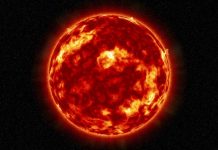Hurricanes, tornadoes and floods are rampant around the world right now. While experts work to decipher the reasoning behind the new line of super storms, it is paramount that you are able to protect your family regardless of what Mother Nature throws your way.
Safe rooms are fortified rooms installed in or near a residence or business. It is designed to keep you and anyone in the safe room with you protected from elements that might otherwise lead to injury or death.


Protecting yourself and your family are critical. Installing a safe room specifically designed for inclement weather and potential intruder invasion can mean the difference in survival. While you can build a safe room on your own, it is often more cost-effective to install an industrial grade prefabricated unit in a designated spot within your home or just outside underground.
Safe Room Essentials
Consider the costs of building or installing a safe room. Many prefabricated safe rooms designed for single family use cost anywhere from $4,000 to $10,000 or more depending on how large and elaborate you want to go. This doesn’t include the cost of delivery and installation, which might include digging a spot and creating a foundation of cement for structural integrity.


Choosing the Right Safe Room
When choosing a safe room, there are several things to consider beyond just money. First is safety. Choose a product that meets or exceeds FEMA standards in construction and material grade. These have been tested to withstand high-winds and impact.
Look at the type of weather you are primarily protecting against. There is little time to prepare for a tornado but more extended time to prepare for a hurricane. Consider the more warning time means the more people you might be housing for protection, whether extended family or neighbors who are not as prepared as you are. This affects the size of the unit you shop for.
Consider where the safe room will be located within your property. A safe room in a basement will be different from a safe room underground steps from your backdoor. Some safe rooms are designed exclusively for above ground use while others are designed for underground use only. Don’t buy the wrong one, you won’t be able to rely on its effectiveness.
 Swisher SR84X114G ESP Safety Shelter with Capacity Up to 20 Private/12 Person
Swisher SR84X114G ESP Safety Shelter with Capacity Up to 20 Private/12 Person
Swisher SR84X114GESP Safety Shelter: This above ground safety shelter is made of steel with an easy to assemble and re-assemble design to move and relocate if desired. Emergency exit panels allow quick exit in emergency situations along with a side sliding pocket door that opens regardless of blockage.


Dimensions:
- 84 inches wide
- 114 inches long
- 80 inches tall
- 3,000 pounds
Editor’s Rating: 10/10
Pros:
- Up to 20 people
- Versatile above ground installation
- Shielded air vents
Cons:
- Not waterproof
- Improper user assembly can lead to vulnerable segments
 Granger Plastics In-ground Tornado Shelter
Granger Plastics In-ground Tornado Shelter
Granger Plastics In-ground Tornado Shelter: This in-ground shelter is perfect for a small family backyard shelter. Designed for easy installation without needing grounding anchors. Made with polyethylene material giving it an expected lifespan of 1000+ years. Exceed FEMA storm impact standards with an aluminum door with three steel locking points. Holds up to five adults.


Wall construction is ½” thick double wall construction of polyethylene. Maintains a 6 foot height within the unit making a bit cramped for taller individuals.
Dimensions:
- 1,100 pounds
Editor’s Rating: 9/10
Pros:
- Battery operated lighting system
- Limited lifetime warranty
- Rust and rot proof design
Cons:
- Additional installation contractor required to place in-ground
- Outward opening door may be covered limited exit ability
 Safe Harbor Storm Shelter
Safe Harbor Storm Shelter
Safe Harbor Storm Shelter: This above-ground storm shelter is suitable for garage or basement installation. The shelter kit meets FEMA National Wind Institute standards and is suitable for up to six standing adults people.
It must be anchored to a concrete slab limiting some location choices but doesn’t need a crane or other heavy equipment reducing installation costs. Air vents provide consistent airflow.


Dimensions:
- 48 inches wide
- 60 inches long
- 84 inches tall
- 2,200 pounds
Editor’s Rating: 9/10
Pros:
- Tru-Vault Door locks six bolts in one fast easy motion
- Powerful 500-watts unit
- Clear lid for monitoring
Cons:
- Air vents at bottom can become blocked
- Must be anchored to concrete
 SafRoom SR88 Tornado Shelter, 16-Person Occupancy
SafRoom SR88 Tornado Shelter, 16-Person Occupancy
SafRoom SR88 Tornado Shelter: This above ground tornado shelter boasts 64 square feet of internal space housing up to 16 adults during severe storm conditions. It meets FEME National Wind Institute standards for EF-5 tornado winds and impact.
The 10-guage steel construction is prefabricated for precision, thus tight secure fitting at installation. The door has triple locking latching for additional safety.


Dimensions:
- 96 inches wide
- 96 inches long
- 84 inches tall
- 2,264 pounds
Editor’s Rating: 9/10
Pros:
- Extended height for comfort
- Easy assembly doesn’t require contractors
- Internal and external locking mechanism to safely store items inside when not used as shelter
Cons:
- Door swings out which can get blocked
- Large unit requires large space
 Harbor Enterprises; LLC In-Garage 4 ft. x 8 ft. Tornado Storm Shelter
Harbor Enterprises; LLC In-Garage 4 ft. x 8 ft. Tornado Storm Shelter
Harbor Enterprises In-Garage Tornado Storm Shelter: Designed to work within your existing garage for added protection and quick access. Anchors flush to the garage floor with 10 gauge steel construction. Sliding top door and airflow vents provide easy access along with removable stair treads for added space inside.


Dimensions:
- 48 inches wide
- 96 inches long
- 84 inches tall
Editor’s Rating: 8/10
Pros:
- Removable features for space and comfort
- Easy assembly doesn’t require contractors
- Durable construction with flexible use
Cons:
- Cumbersome top entry can be blocked
- Requires adequate garage space
FAQs
- What is the FEMA wind test?
FEMA uses the Texas Tech University’s National Wind Institute and its Debris Impact Facility to determine the effects of objects impacts structures at hurricane and tornado force winds. When it comes to storm shelters; impact is determined by 2×4” studs at 100 miles per hour which replicates the impact during EF-5 tornadoes with winds up to 250 miles per hour.
- Are there items that I should put in the storage shelter?
FEMA and the American Red Cross recommend keeping emergency supplies in the storm shelter. This includes enough water, food, first aid, clothing, blankets, and medication for anyone expected to be in your shelter. Shelters don’t have a commode, plan for a portable commode with disposal system of bags.


Inventory items annually, looking for expired or damaged items. Make sure any clothing or special needs are addressed such as diapers, season clothes and emergency blankets. Plan for pets to have enough food and water as well.
- How long should we plan on being in the shelter?
While most storm warnings are for a short period of time, should your shelter be in the direct path of a tornado, your exit might be blocked by debris outside the shelter. It is wise to plan for at least 2 weeks of food and water.
As part of your emergency supplies, keep a whistle, radio and walkie-talkies in the shelter with extra batteries. This will help you alert rescue works to your location should your family be trapped in the shelter.





















